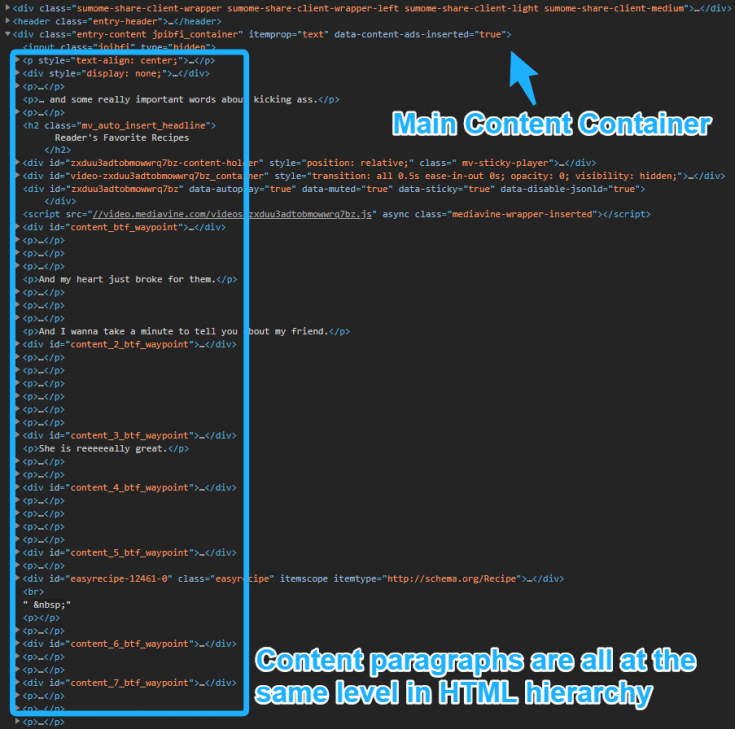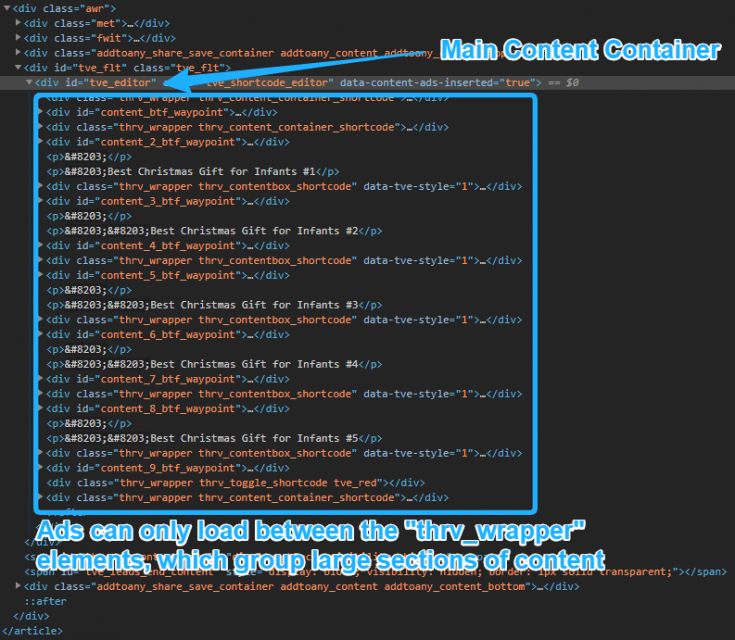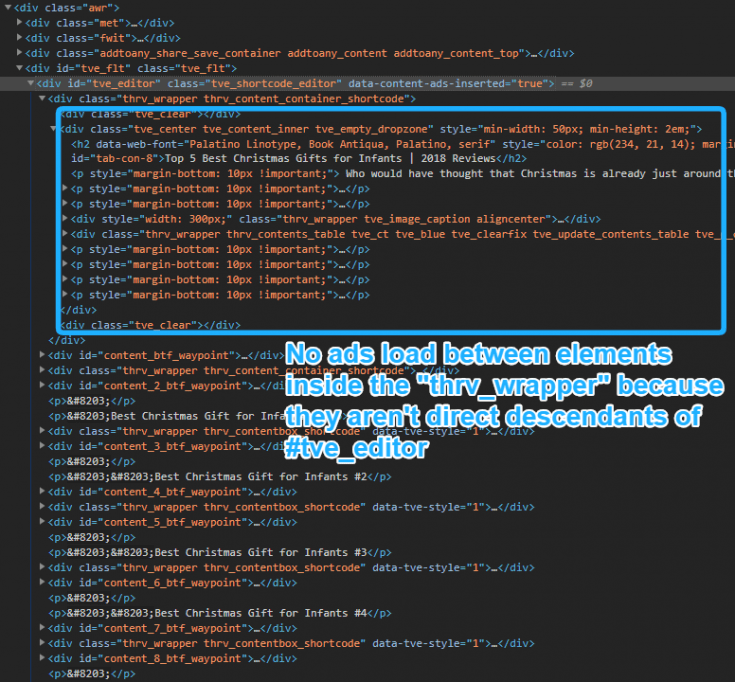- Advertising
Why Post and Page Builders Can Be Bad for Ad Performance
•
 We’ve always recommended avoiding builders on posts for the sake of ad performance, but we wanted to break down the biggest reasons why post builders can be detrimental to your ads. So why don’t ads and post builders get along?
Post builders actually break the HTML structure of your site’s code by automatically adding wrapped <div> containers around your post content. This makes it very difficult to effectively target your in-content ads. It limits our script’s ability to locate the most optimal placements to maximize your in-content ad performance and earnings.
The complication with any post/page builder relates to the nested <div> structure of the post’s HTML. We provide our script with a unique CSS selector that identifies the main content element on the page.
Our script can then intelligently load in-content ads between elements that are direct descendants of that main content container. The script uses a number of factors such as the height and density of the content and even your reader’s exact screen size to determine optimal locations to maximize performance while abiding by ad policy.
The key to this is that the script can only load ads between immediate children or direct descendants of the single container we specify. Below is a look at a normal post vs. a post utilizing a builder.
We also recently published a help doc that dives into the specific technical elements of common page builders with more visual examples. You can check it out here!
We’ve always recommended avoiding builders on posts for the sake of ad performance, but we wanted to break down the biggest reasons why post builders can be detrimental to your ads. So why don’t ads and post builders get along?
Post builders actually break the HTML structure of your site’s code by automatically adding wrapped <div> containers around your post content. This makes it very difficult to effectively target your in-content ads. It limits our script’s ability to locate the most optimal placements to maximize your in-content ad performance and earnings.
The complication with any post/page builder relates to the nested <div> structure of the post’s HTML. We provide our script with a unique CSS selector that identifies the main content element on the page.
Our script can then intelligently load in-content ads between elements that are direct descendants of that main content container. The script uses a number of factors such as the height and density of the content and even your reader’s exact screen size to determine optimal locations to maximize performance while abiding by ad policy.
The key to this is that the script can only load ads between immediate children or direct descendants of the single container we specify. Below is a look at a normal post vs. a post utilizing a builder.
We also recently published a help doc that dives into the specific technical elements of common page builders with more visual examples. You can check it out here!
 Here’s a look at a post utilizing a page builder:
Here’s a look at a post utilizing a page builder:
 If we dig a little deeper into the HTML hierarchy, you can see all of the content where ads cannot be automatically inserted:
If we dig a little deeper into the HTML hierarchy, you can see all of the content where ads cannot be automatically inserted:
 A few things to keep in mind when considering implementing a builder:
A few things to keep in mind when considering implementing a builder:
- The HTML structure that is automatically generated by builders is typically a little messy and does not follow standard web development practices. Often, it will not pass Google validation.
- Builders have a tendency to wrap your content in many nested div elements that make it very difficult for Google to interpret the subject matter, which can have a negative impact on your SEO. Additionally, all of this extra bulk can greatly impact your site speed and overall site performance.
- Some page builders make it impossible for our script to know when it’s looking at a page builder post vs a non-page builder post.
 We will always do our best to support whichever direction you decide, but with some post builders and ad performance optimization, there may be a point where our hands become a little tied. While we can target posts with builders with ads in many instances, it isn’t optimal and we unfortunately can’t guarantee that ad performance will be consistent across all posts.
Ultimately, using a post builder is totally your decision! We just want you to be to be fully informed of absolutely anything that could have a negative impact on your ad performance.
A special shoutout to the Support Engineering team for their contributions to this post!
We will always do our best to support whichever direction you decide, but with some post builders and ad performance optimization, there may be a point where our hands become a little tied. While we can target posts with builders with ads in many instances, it isn’t optimal and we unfortunately can’t guarantee that ad performance will be consistent across all posts.
Ultimately, using a post builder is totally your decision! We just want you to be to be fully informed of absolutely anything that could have a negative impact on your ad performance.
A special shoutout to the Support Engineering team for their contributions to this post!About the author
Share this page